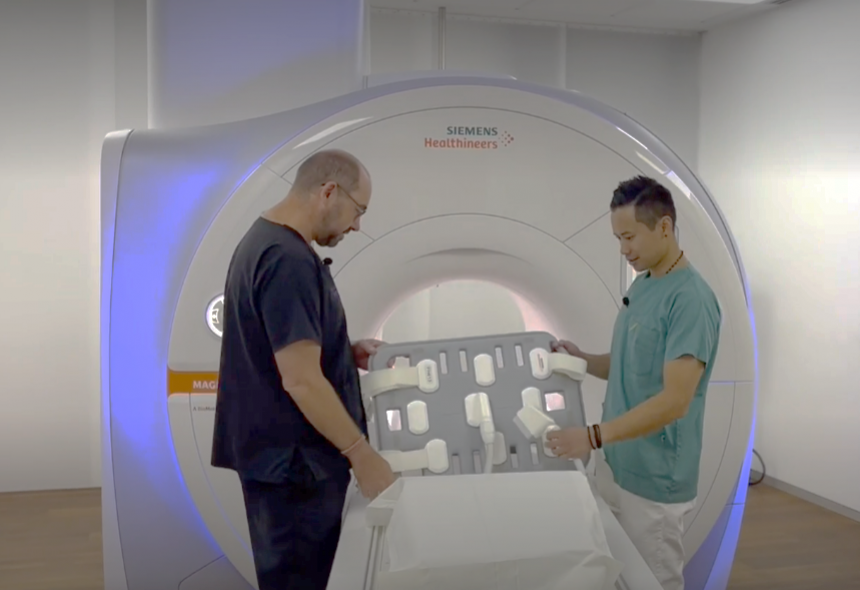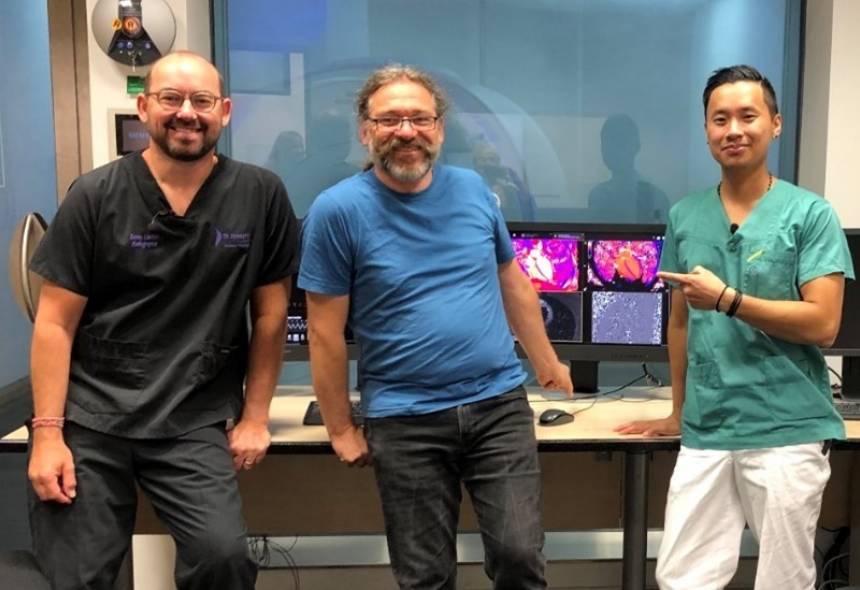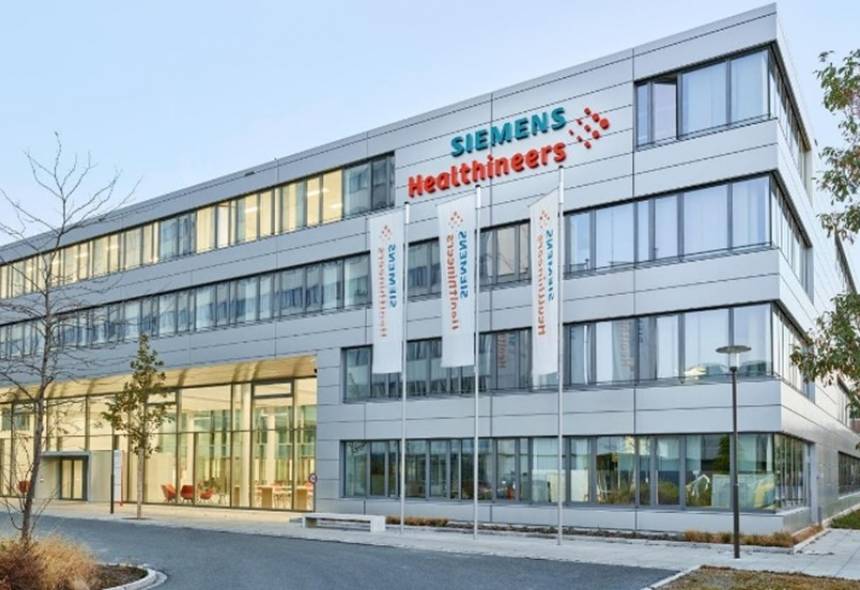St Joseph’s Radiographer invited to trial ground-breaking Cardiac MRI technology
Date Posted: 3rd October 2022

Benny Lawton, Executive Cardiac MR Radiographer at St Joseph’s hospital, was invited to evaluate the very latest in Cardiac MRI software at what he called “the extremely impressive” Siemens Healthineers headquarters in Erlangen, Germany.
The technology which Benny was there to scrutinise is called the Biomatrix Beat Sensor, a revolutionary development from Siemens Healthineers which allows cardiac imaging on an MRI scanner without using ECG gating. This will mean patients are no longer required to have their chests prepared with a cold, sticky gel and male patients with hairy chests won’t need to be shaved in preparation for the placement of electrode stickers. The ECG box with wires which lies on top of the patient’s chest is also no longer needed.
This latest technology also provides time saving advantages which benefits both the patients and the MRI staff.
Benny, along with another radiographer called Bac Nguyen from the Rikshospitalet in Oslo, Norway, not only tested the equipment, but filmed a video which Siemens Healthineers will use to publicise the Biomatrix Beat Sensor technology.

“It was such a fantastic opportunity and experience to visit the Siemens Healthineers MRI factory and research facility. I was made to feel especially welcome by the whole team. To meet and work with inventors who are developing state of the art technology, which I am lucky enough to use on a daily basis, was a true privilege.” Benny Lawton, Executive CMR Radiographer, St Joseph’s hospital.
Dr Gaia Banks, Global Clinical Marketing Manager for Cardiac MRI at Siemens Healthineers had this to say about Benny’s visit to Erlangen,
“For us, it’s exciting to have clinical users like Benny and Bac come to the factory to test-drive our newest products. “The proof is in the pudding”, so it’s what they say about the utility of the technology that matters. With the BioMatrix Beat Sensor, Benny and Bac immediately recognized they were working with something that will revolutionize Cardiac MRI.”




